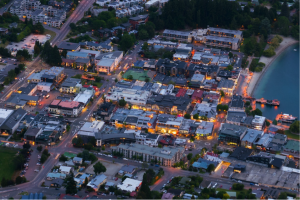07 Mar Maybe It Takes A Neighborhood?
Nobody should wish what happened in California the past few summers, or Texas this winter, on any region, state, or community. One state faced their worst fires ever, the other a massive ice storm, and both succumbed to blackouts substantially impacting the quality of life for millions of residents.

Research by Climate Central, a nonpartisan organization that dives deep into the climate science, reported that blackouts brought on by storms, droughts, floods and fires – all arguably a consequence of global warming – have doubled since 2003. They said these weather-related outages have increased at a disproportionate rate compared to other blackouts, costing the U.S. economy tens of billions of dollars.
In response, a growing number of ‘Green Groups’ and scientists have been pushing for decentralized regional, or even community-based, power systems – micro-grids that can have the backs of their residents when the U.S. grid (or in the case of Texas, the state grid), crashes due, as most attribute these recent disasters, to a climate crisis. Of course, beyond that, the other equally critical issue is the increasing electrical power demand that simply cannot be efficiently met by an aging power generation and distribution system.
So here’s some food for thought. What if part of our response was to improve the power supply neighborhood by neighborhood? Simple, grassroots initiatives that could be coupled hundreds or thousands of times? That is, take it block by block and brainstorm and build neighborhoods with their own grid? Each residence in the neighborhood would be capable of producing its own power, and even sharing that power with the local hospital or police station in time of need. An innovative and practical solution is coming: the upcoming E|ONE, a private home generation appliance for the home.
Like solar, the E|ONE can produce and store power for the home. Unlike solar, it can provide energy on demand. (And if you want both the E|ONE and solar, they can be easily integrated together.) Bottom line, with these devices in place, residential developers could begin to sell energy-independent neighborhoods.
No more freezing on the couch during ice storms. No more sitting in the dark at the kitchen table during rolling blackouts.
There’s an armful of work to do, of course, to get there. But how attractive is that? Not just a new subdivision, but a sub in its own back-up energy bubble? Seems like that might be worthy of the attention of the future homeowner, the developer, and all those hoping for a greener future.
Jacques Beaudry-Losique | Chief Executive Officer | Enginuity Power Systems



